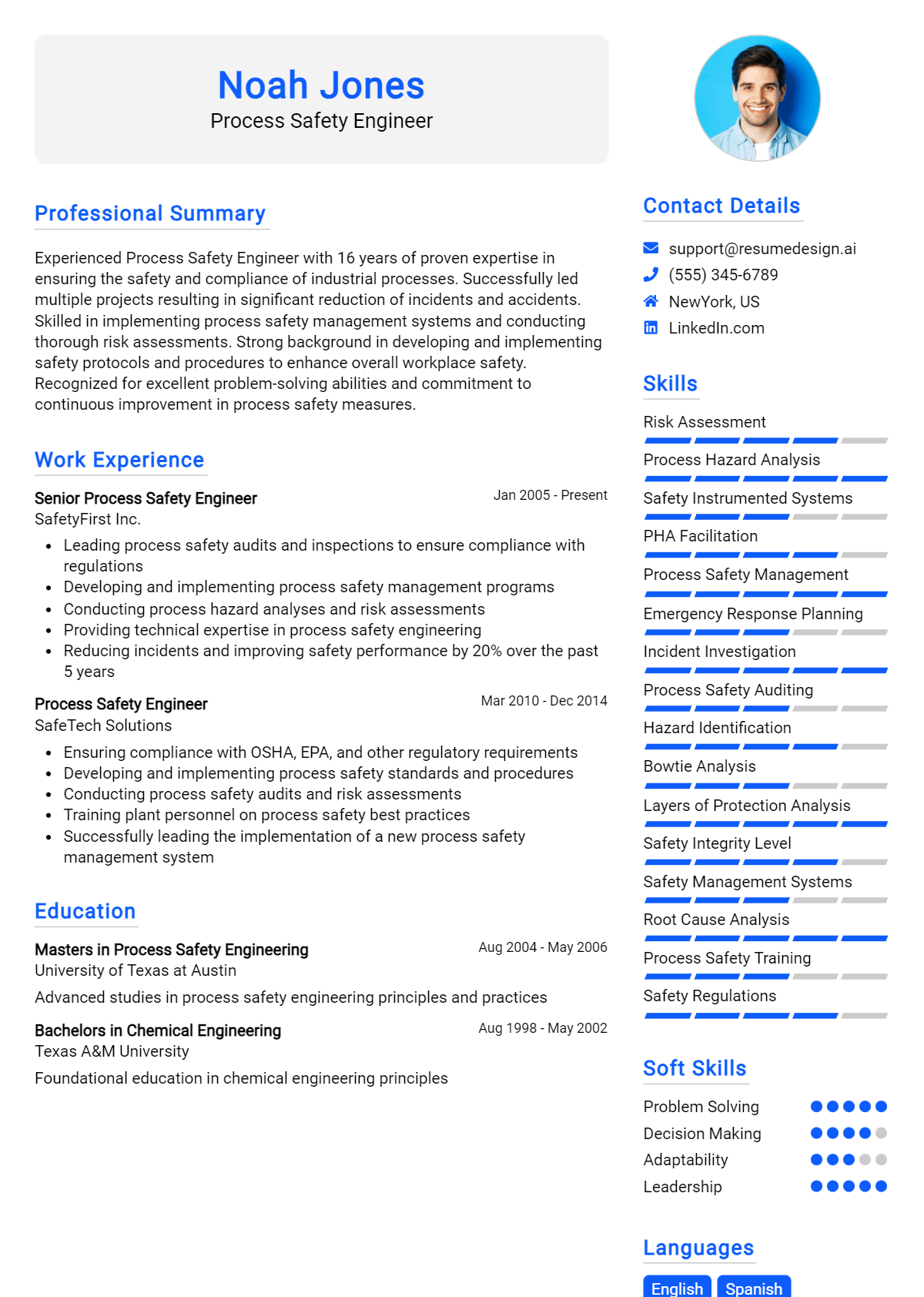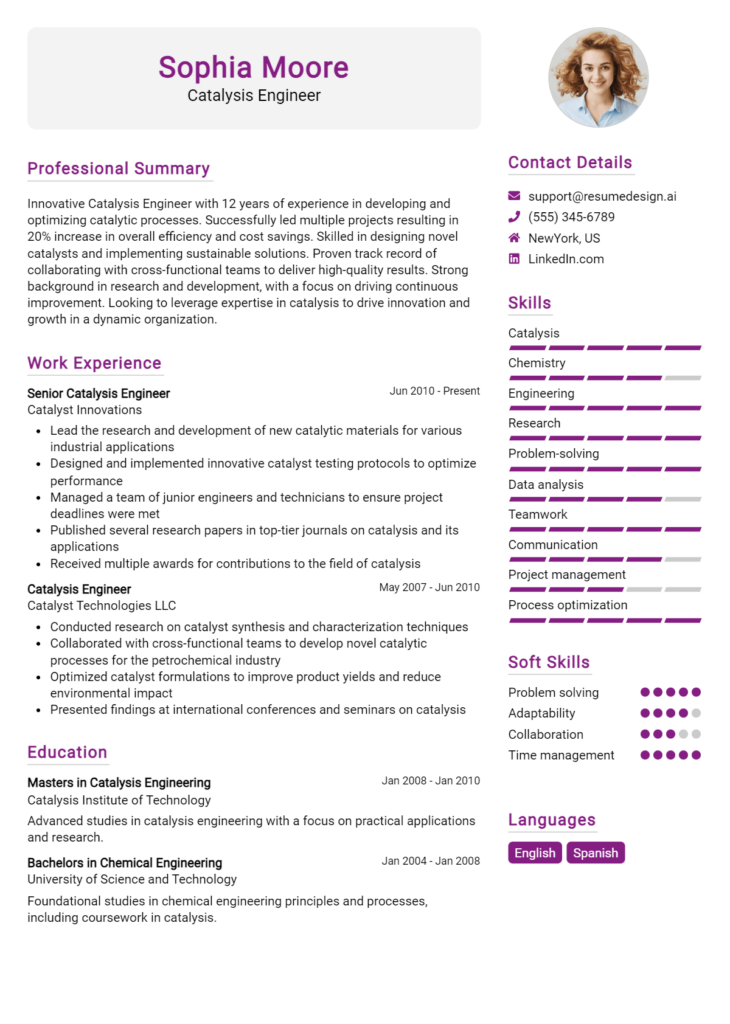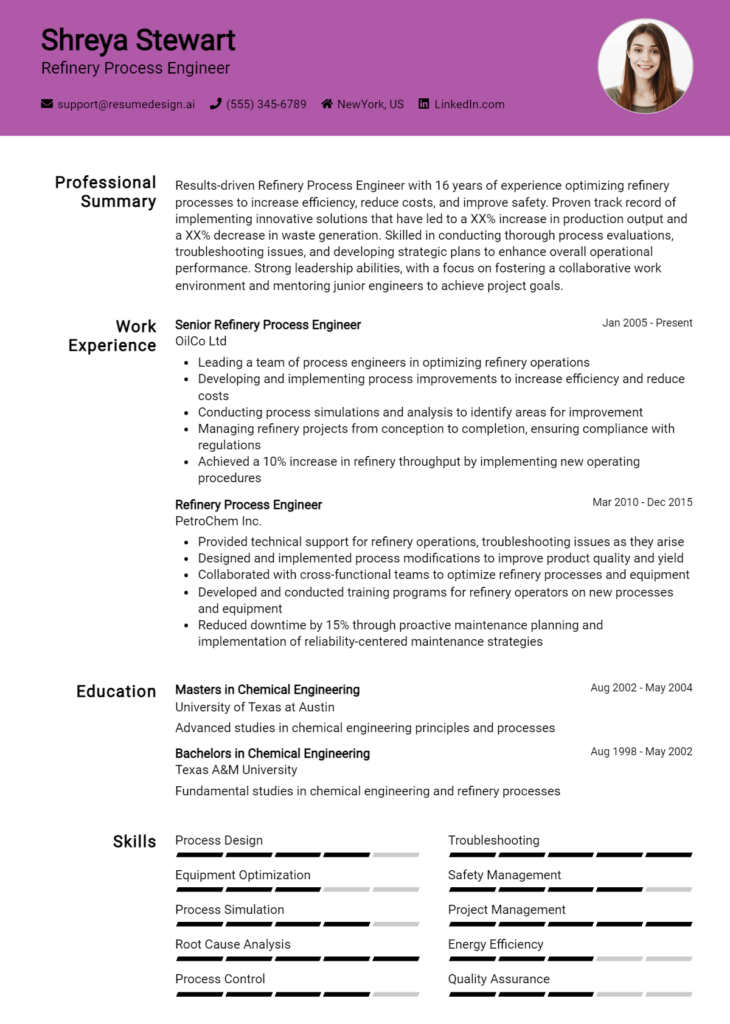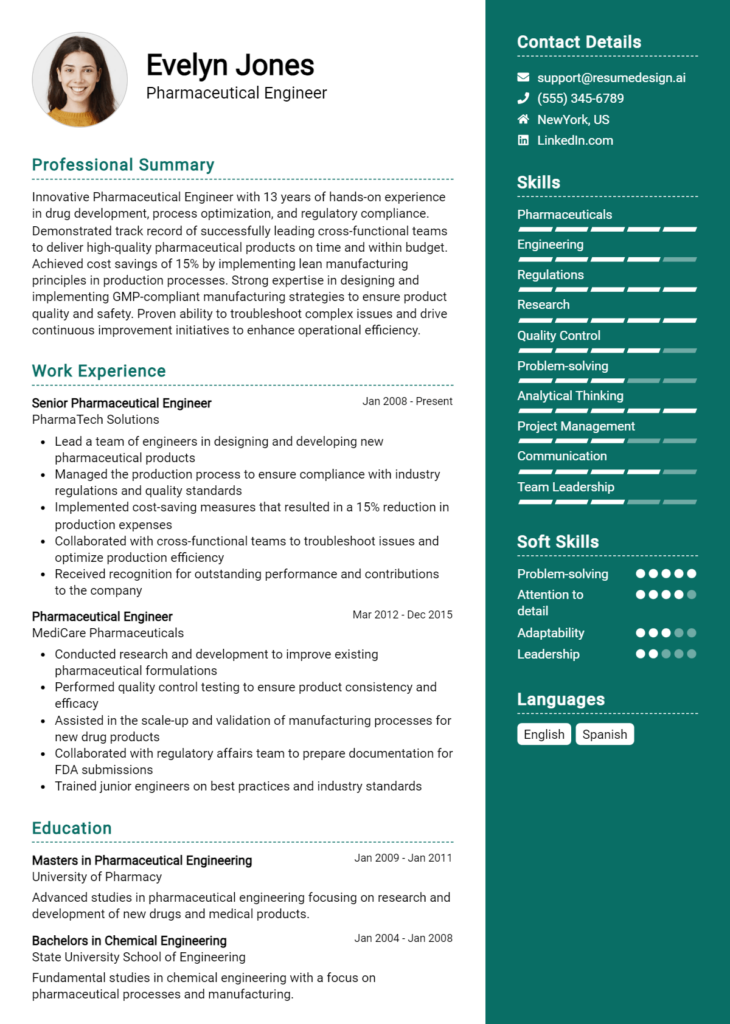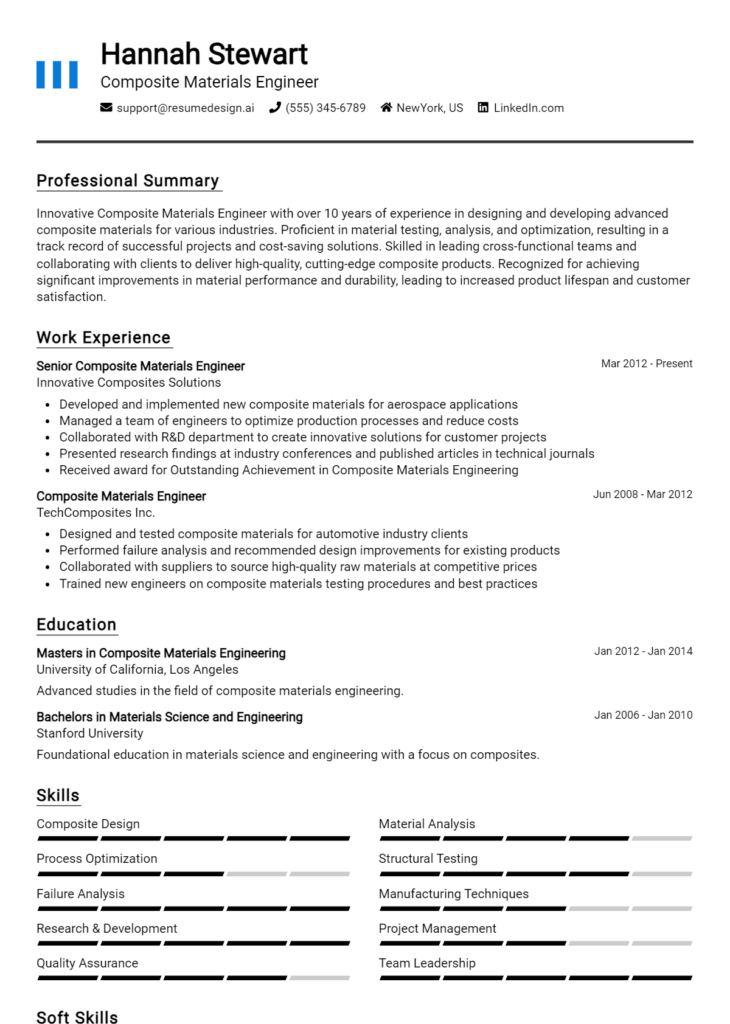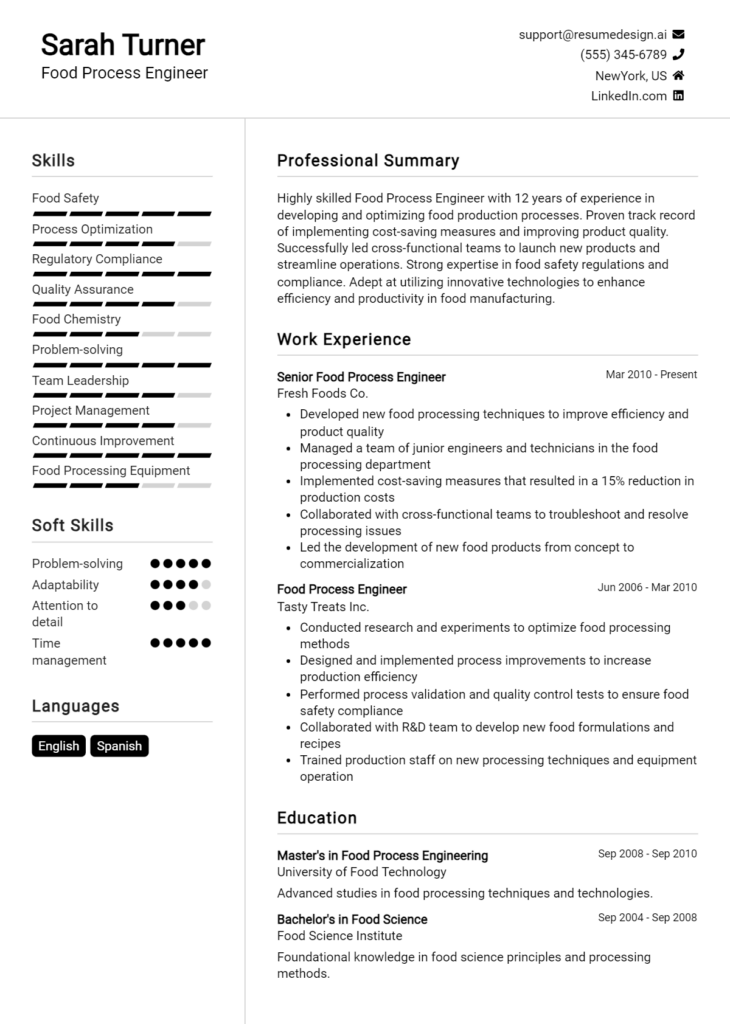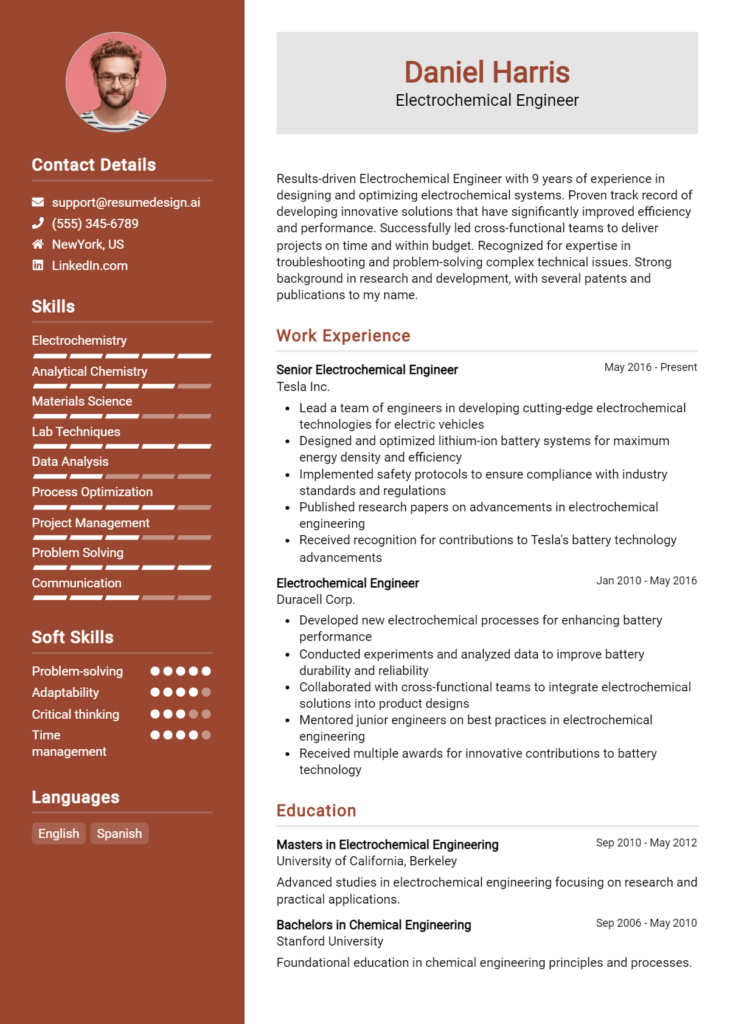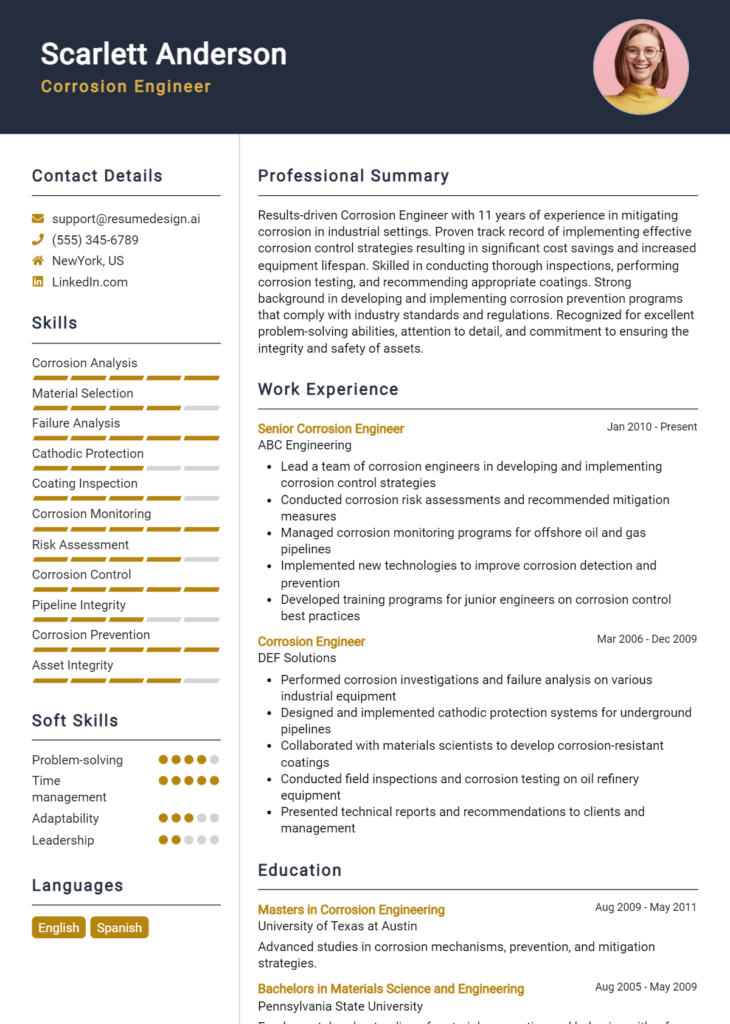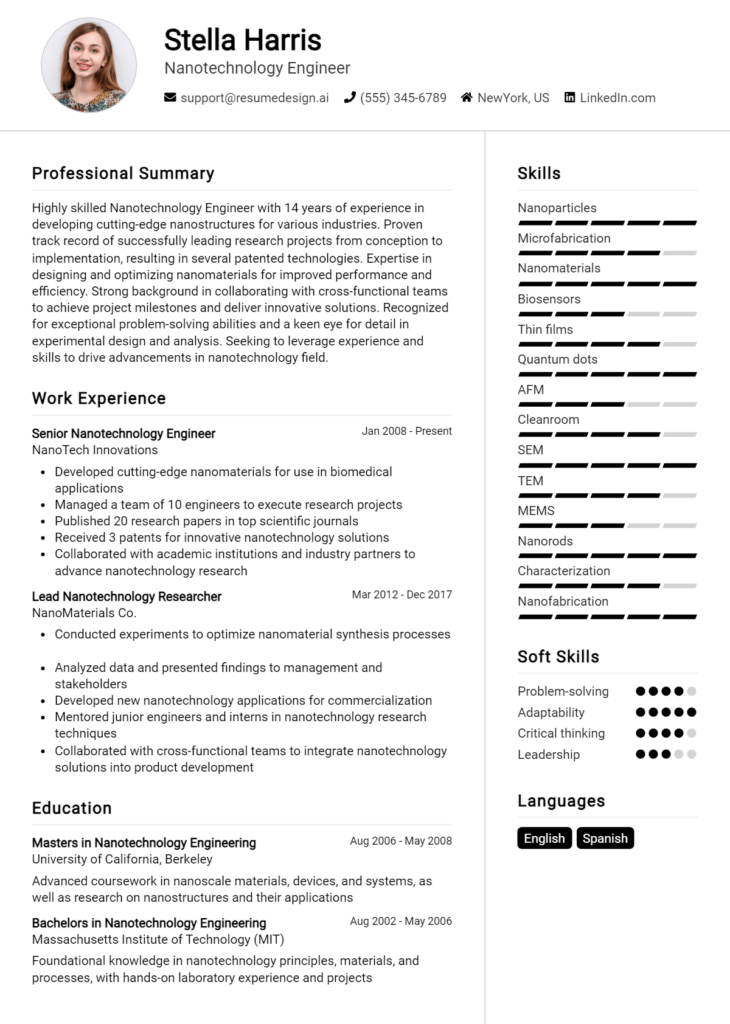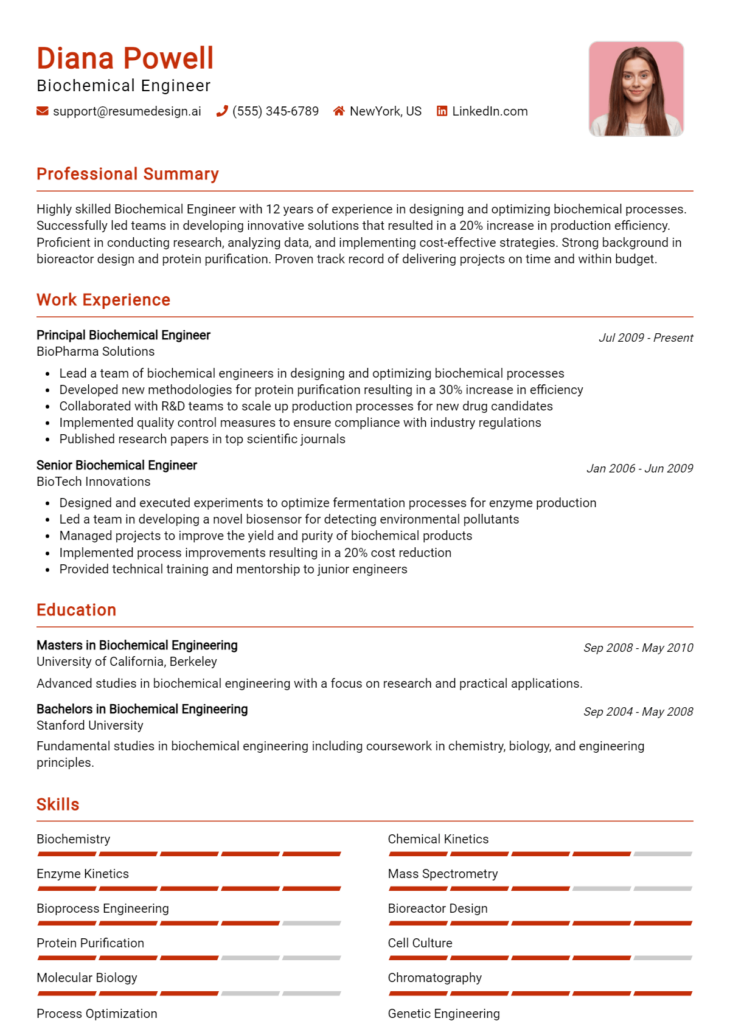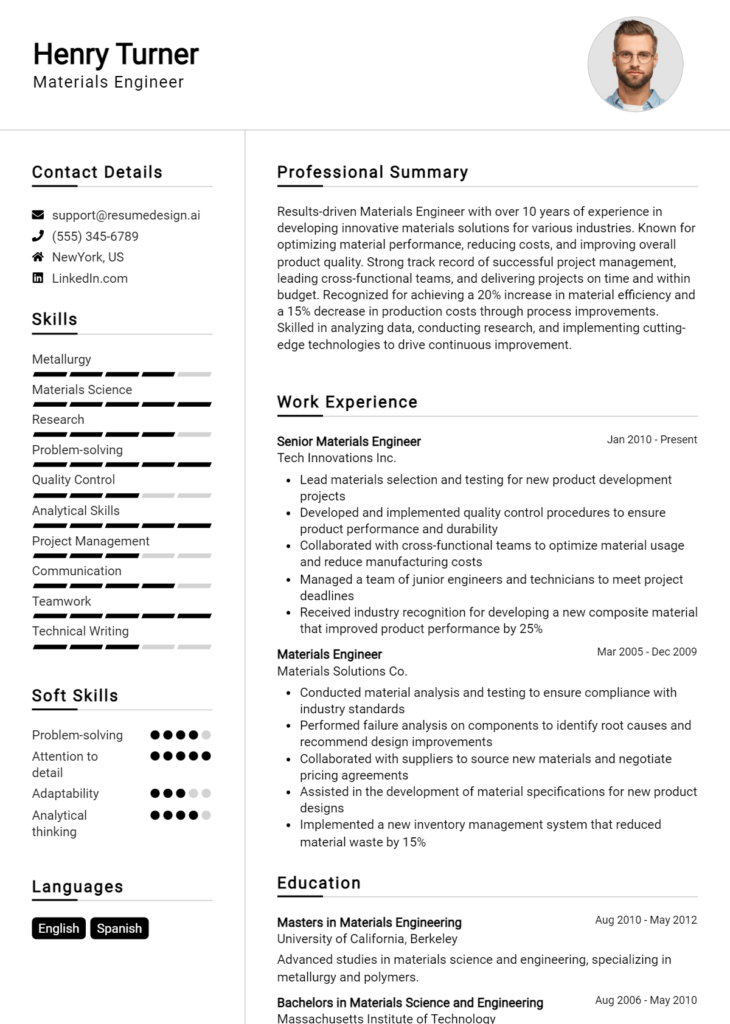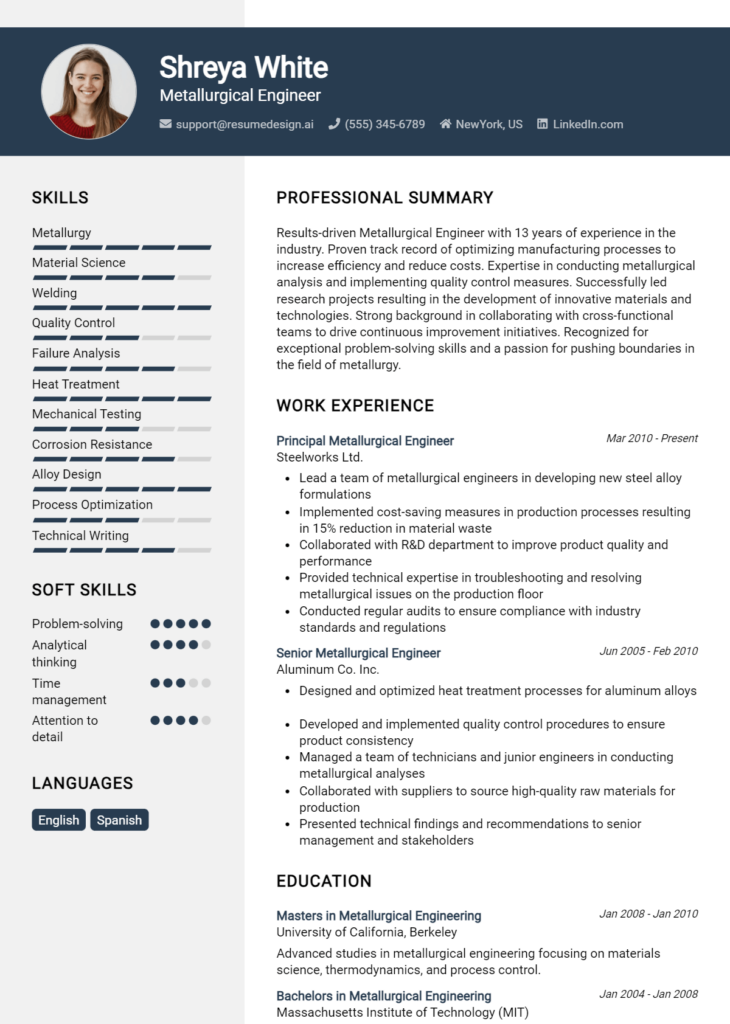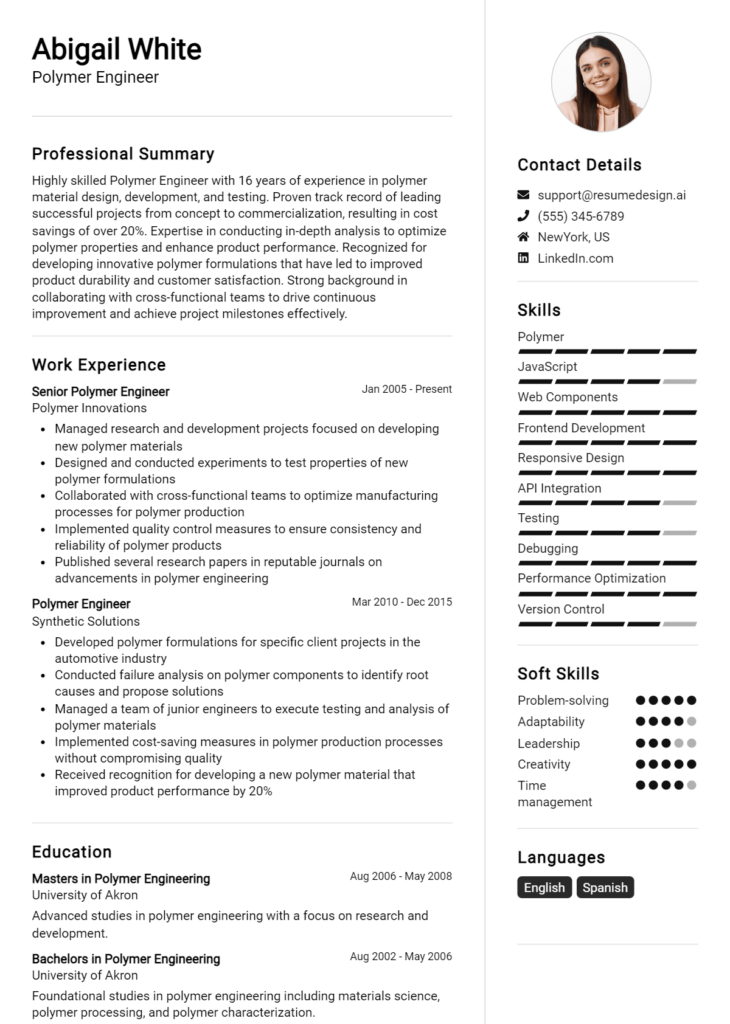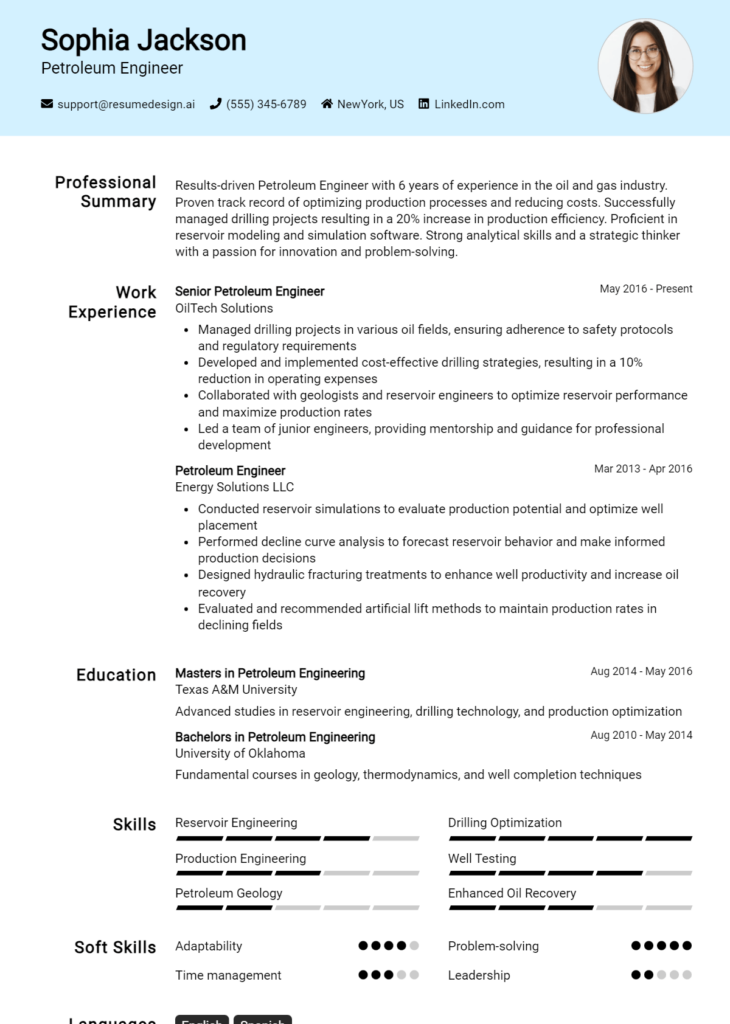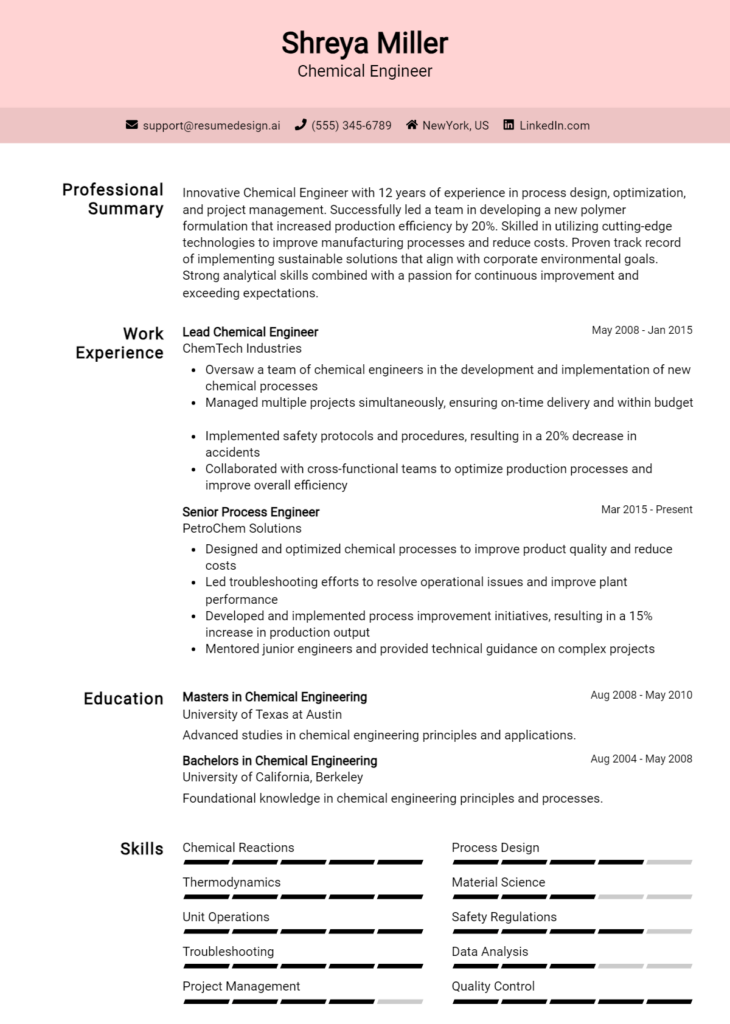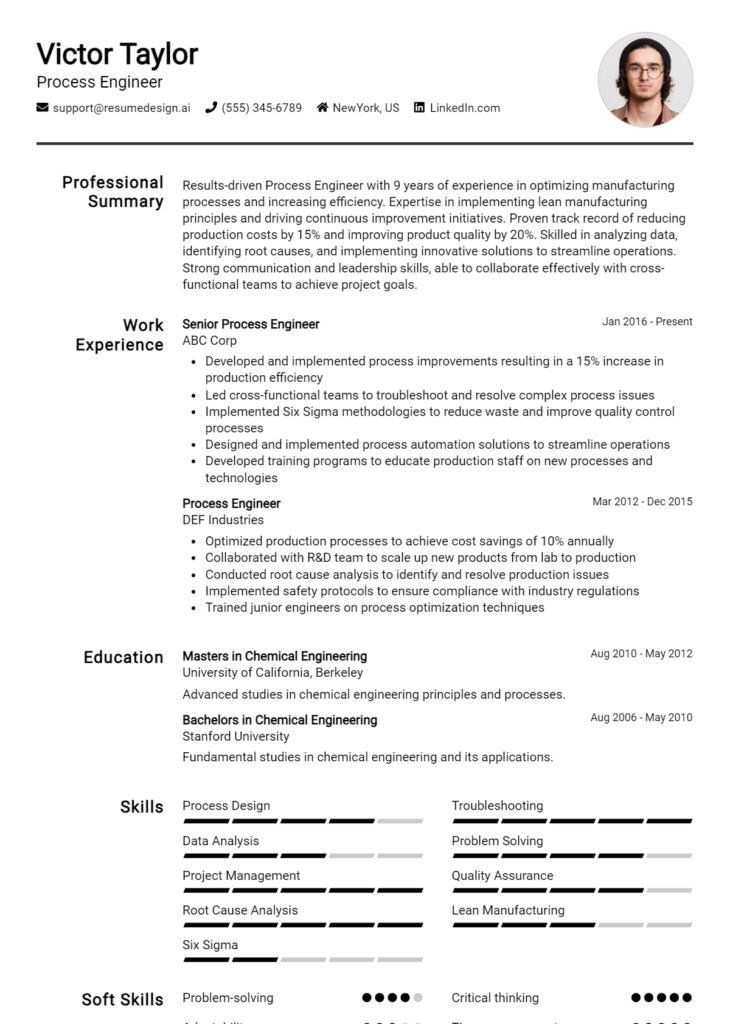Process Safety Engineer Core Responsibilities
A Process Safety Engineer plays a crucial role in ensuring the safety and efficiency of industrial processes. Key responsibilities include conducting hazard analyses, implementing safety management systems, and collaborating with various departments, such as operations, engineering, and compliance. Essential skills encompass technical expertise, operational insight, and strong problem-solving abilities, which are vital for identifying and mitigating risks. By effectively communicating these qualifications in a well-structured resume, candidates can demonstrate their value in contributing to the organization’s safety and operational goals.
Common Responsibilities Listed on Process Safety Engineer Resume
- Conducting process hazard analyses (PHAs) to identify potential risks.
- Developing and implementing safety management systems and policies.
- Performing risk assessments and recommending mitigation strategies.
- Collaborating with cross-functional teams to enhance safety practices.
- Leading incident investigations and developing corrective actions.
- Ensuring compliance with regulatory and industry safety standards.
- Providing training and guidance on safety protocols to staff.
- Evaluating safety equipment and recommending improvements.
- Monitoring and reporting safety performance metrics.
- Supporting the design and operation of safe processes and facilities.
- Participating in audits and safety inspections.
- Staying updated on industry trends and best practices in process safety.
High-Level Resume Tips for Process Safety Engineer Professionals
A well-crafted resume is crucial for Process Safety Engineer professionals, as it serves as the first impression they make on potential employers. In a field where technical expertise and regulatory knowledge are paramount, a resume must effectively reflect both the candidate's skills and notable achievements. It is essential for conveying one's qualifications in a concise and impactful manner, ultimately influencing hiring decisions. This guide will provide practical and actionable resume tips specifically tailored for Process Safety Engineer professionals, helping them to stand out in a competitive job market.
Top Resume Tips for Process Safety Engineer Professionals
- Tailor your resume to each job application by incorporating specific keywords from the job description.
- Highlight relevant experience in process safety, including any roles that involved risk assessments, safety audits, or compliance management.
- Quantify your achievements with concrete metrics, such as reducing incident rates by a certain percentage or saving costs through safety improvements.
- Include industry-specific skills, such as HAZOP analysis, Process Hazard Analysis (PHA), and knowledge of regulatory standards like OSHA and EPA.
- Showcase certifications relevant to the field, such as Certified Safety Professional (CSP) or Process Safety Management (PSM) training.
- Utilize a clean, professional format that enhances readability and allows key information to stand out.
- Incorporate a summary statement at the top of your resume that encapsulates your experience and passion for process safety.
- Highlight any leadership roles or initiatives you have taken that contributed to a safer work environment.
- Demonstrate continuous learning by including recent training, workshops, or courses related to process safety engineering.
By implementing these tips, Process Safety Engineer professionals can significantly increase their chances of landing a job in their field. A well-structured and targeted resume not only showcases qualifications and achievements but also demonstrates a candidate's commitment to excellence in safety engineering, making them a more attractive choice to potential employers.
Why Resume Headlines & Titles are Important for Process Safety Engineer
In the competitive field of process safety engineering, a well-crafted resume headline or title serves as the first impression a candidate makes on hiring managers. A strong headline can instantly capture attention and encapsulate a candidate's key qualifications in a concise, impactful phrase. Given the critical nature of the role, which involves ensuring safety in processes involving hazardous materials, it's essential that the headline reflects relevant expertise, experience, and skills directly related to the job being applied for. A compelling resume title not only piques interest but also sets the stage for the rest of the application, making it a vital component in the job search process.
Best Practices for Crafting Resume Headlines for Process Safety Engineer
- Be concise: Limit the headline to one impactful phrase that summarizes your expertise.
- Be specific: Use keywords that relate to process safety engineering to attract the right attention.
- Highlight your strengths: Focus on your unique skills or accomplishments that set you apart.
- Use action-oriented language: Start with strong verbs that reflect your experience and expertise.
- Tailor to the job: Customize your headline based on the specific role you are applying for.
- Avoid jargon: Use clear language that is easily understood by hiring managers and recruiters.
- Incorporate metrics: Whenever possible, include quantifiable achievements to demonstrate effectiveness.
- Maintain professionalism: Ensure the tone and language used are appropriate for the industry.
Example Resume Headlines for Process Safety Engineer
Strong Resume Headlines
"Certified Process Safety Engineer with 10+ Years of Experience in Hazard Analysis and Risk Assessment"
“Process Safety Specialist: Proven Track Record in Developing Safety Management Systems and Compliance”
“Dynamic Process Safety Engineer Skilled in Incident Investigation and Safety Training Programs”
Weak Resume Headlines
“Engineer with Some Experience”
“Looking for a Job in Engineering”
The strong resume headlines are effective because they are specific, relevant, and highlight key qualifications that directly pertain to the role of a Process Safety Engineer. They communicate years of experience, certifications, and areas of expertise, which immediately signals to hiring managers that the candidate is a qualified professional. In contrast, the weak headlines fail to impress due to their vagueness and lack of specificity. They do not convey any substantial information about the candidate's qualifications or fit for the role, making them easily forgettable in a sea of applications.
Writing an Exceptional Process Safety Engineer Resume Summary
A well-crafted resume summary is crucial for a Process Safety Engineer, as it serves as the first impression an employer gets of the candidate. In a competitive job market, hiring managers often sift through numerous applications, making it imperative for the summary to quickly capture their attention. A strong resume summary showcases key skills, relevant experience, and notable accomplishments that align with the job role. By being concise and impactful, it sets the tone for the rest of the resume and demonstrates the candidate's suitability for the position they are applying for.
Best Practices for Writing a Process Safety Engineer Resume Summary
- Quantify Achievements: Use specific numbers to highlight your accomplishments, such as the percentage of incidents reduced or cost savings achieved.
- Focus on Skills: Emphasize technical and soft skills that are directly relevant to process safety, such as risk assessment and safety management systems.
- Tailor the Summary: Customize your summary for each job application by aligning it with the specific qualifications and requirements listed in the job description.
- Be Concise: Keep the summary brief, ideally between 3-5 sentences, to maintain the reader's interest.
- Use Action Verbs: Start sentences with strong action verbs that convey your proactive contributions to previous roles.
- Highlight Relevant Experience: Focus on past experiences that directly relate to process safety engineering, showcasing your knowledge and expertise in the field.
- Showcase Certifications: Mention relevant qualifications and certifications, such as a Certified Safety Professional (CSP) or Process Safety Management (PSM) certifications.
- Demonstrate Problem-Solving Skills: Illustrate your ability to tackle complex safety challenges and develop effective solutions.
Example Process Safety Engineer Resume Summaries
Strong Resume Summaries
Dynamic Process Safety Engineer with over 8 years of experience in the chemical manufacturing industry, successfully reducing incident rates by 30% through the implementation of rigorous safety protocols and training programs.
Dedicated Process Safety Engineer with a proven track record in conducting HAZOP studies and risk assessments that led to a 25% decrease in operational hazards, ensuring compliance with OSHA regulations and enhancing workplace safety.
Results-oriented Process Safety Engineer with expertise in process hazard analysis and incident investigation, achieving a 15% reduction in safety-related downtime through the development of a comprehensive safety management system.
Experienced Process Safety Engineer specializing in risk management and regulatory compliance, recognized for leading a cross-functional team that streamlined safety procedures, resulting in a $500,000 annual cost savings.
Weak Resume Summaries
Process Safety Engineer with experience in the field. I am looking for a new opportunity to use my skills.
Detail-oriented engineer with knowledge of safety processes and a desire to improve workplace safety.
The strong resume summaries effectively highlight specific accomplishments, quantify results, and showcase relevant skills tailored to the position, making them impactful and engaging. In contrast, the weak summaries are vague, lacking concrete achievements or details that would demonstrate the candidate's qualifications, making it challenging for hiring managers to gauge the applicant's fit for the role.
Work Experience Section for Process Safety Engineer Resume
The work experience section of a Process Safety Engineer resume is crucial as it serves as a platform for candidates to showcase their technical skills, leadership capabilities, and their track record of delivering high-quality results in complex environments. This section highlights not only the specific roles and responsibilities held but also emphasizes quantifiable achievements that demonstrate the engineer's ability to manage teams, adhere to industry standards, and drive process improvements. By aligning their experiences with key industry metrics and standards, candidates can significantly enhance their appeal to potential employers, making it imperative to present this section thoughtfully and strategically.
Best Practices for Process Safety Engineer Work Experience
- Focus on quantifiable achievements, such as percentage improvements in safety metrics or cost reductions.
- Use action verbs to describe your responsibilities and accomplishments, highlighting your proactive role.
- Include specific technical skills relevant to process safety, such as hazard analysis, risk assessment, and compliance management.
- Showcase leadership experiences, including team management and project oversight.
- Align your experiences with industry standards, such as OSHA regulations, to demonstrate compliance knowledge.
- Highlight collaborative projects that show your ability to work cross-functionally with other teams.
- Tailor your work experience to the job description to ensure relevance and alignment with employer needs.
- Incorporate any certifications or training that enhance your qualifications in process safety engineering.
Example Work Experiences for Process Safety Engineer
Strong Experiences
- Led a cross-functional team to implement a new safety management system, resulting in a 30% reduction in incident rates over two years.
- Conducted risk assessments and hazard analyses for a major facility overhaul, achieving compliance with all regulatory standards and saving $500,000 in potential fines.
- Developed and delivered training programs for over 200 employees on process safety management, increasing safety awareness and reducing accidents by 25%.
- Collaborated with engineering teams to redesign a critical process, which improved efficiency by 15% while enhancing safety measures.
Weak Experiences
- Worked on safety-related tasks at a facility.
- Assisted in safety audits and inspections.
- Participated in team meetings about process safety.
- Helped with training materials for employees.
The examples provided illustrate the difference between strong and weak work experiences. Strong experiences are characterized by specific, quantifiable outcomes that demonstrate leadership, technical expertise, and collaborative efforts, effectively showcasing the candidate's impact on safety and efficiency. In contrast, weak experiences lack detail and quantifiable results, making them vague and unimpressive; they fail to convey the candidate's true capabilities and contributions to process safety engineering.
Education and Certifications Section for Process Safety Engineer Resume
The education and certifications section of a Process Safety Engineer resume is crucial as it serves as a testament to the candidate's academic foundation, specialized knowledge, and commitment to ongoing professional development. This section not only showcases the educational qualifications that underlie the candidate's expertise but also highlights industry-relevant certifications and specialized training that enhance their credibility. By detailing relevant coursework, recognized certifications, and continuous learning pursuits, candidates can effectively align themselves with the job role, demonstrating their preparedness to navigate the complexities of process safety within their respective industries.
Best Practices for Process Safety Engineer Education and Certifications
- Include relevant degrees such as a Bachelor's or Master's in Chemical Engineering, Safety Engineering, or a related field.
- List industry-recognized certifications like Certified Process Safety Professional (CPSP) or NEBOSH Certificate in Process Safety Management.
- Highlight specialized training courses related to process safety management, risk assessment, and hazard analysis.
- Provide details on relevant coursework that aligns with process safety principles and practices.
- Emphasize continuous learning by showcasing participation in workshops, seminars, or webinars on current industry trends.
- Use clear and specific formatting to make this section easy to read and navigate for hiring managers.
- Tailor the education and certifications listed to match the specific requirements of the job being applied for.
- Consider including a brief description of the skills or knowledge gained from each certification or course.
Example Education and Certifications for Process Safety Engineer
Strong Examples
- Bachelor of Science in Chemical Engineering, University of XYZ, 2018
- Certified Process Safety Professional (CPSP), Process Safety Institute, 2020
- NEBOSH Certificate in Process Safety Management, NEBOSH, 2021
- Completed coursework in Process Hazard Analysis and Risk Assessment, University of XYZ, 2017
Weak Examples
- Bachelor of Arts in History, University of ABC, 2015
- Certification in Basic First Aid, Local Community Center, 2019
- Completed an online course on Culinary Arts, 2020
- High School Diploma, Generic High School, 2012
The examples provided illustrate a clear distinction between strong and weak qualifications. Strong examples are directly related to the field of process safety, showcasing relevant degrees and certifications that align with industry standards and requirements. These qualifications reflect the candidate’s expertise and commitment to the profession. Conversely, weak examples highlight educational backgrounds and certifications that lack relevance to the role of a Process Safety Engineer, potentially diminishing the candidate's perceived competence and suitability for the position.
Top Skills & Keywords for Process Safety Engineer Resume
In the competitive landscape of engineering, a well-crafted resume for a Process Safety Engineer must emphasize the right blend of skills to stand out to potential employers. The skills listed in your resume serve as a reflection of your expertise and capabilities in ensuring the safety and integrity of processes within various industries. Highlighting both hard and soft skills is crucial, as they demonstrate not only your technical proficiency but also your ability to communicate, collaborate, and adapt in dynamic environments. A strong showcase of these skills can significantly enhance your chances of landing an interview and ultimately securing a position in this vital field.
Top Hard & Soft Skills for Process Safety Engineer
Soft Skills
- Attention to Detail
- Problem-Solving Skills
- Communication Skills
- Team Collaboration
- Critical Thinking
- Adaptability
- Leadership Ability
- Time Management
- Decision-Making Skills
- Conflict Resolution
Hard Skills
- Process Hazard Analysis (PHA)
- Risk Assessment Techniques
- Safety Management Systems
- Knowledge of Regulatory Compliance (OSHA, EPA)
- Root Cause Analysis (RCA)
- Incident Investigation
- Process Safety Management (PSM)
- Safety Auditing
- Hazard Identification Techniques
- Emergency Response Planning
For more insights on how to effectively highlight your skills and present your work experience, consider tailoring your resume to reflect these essential attributes.
Stand Out with a Winning Process Safety Engineer Cover Letter
Dear [Hiring Manager's Name],
I am writing to express my interest in the Process Safety Engineer position at [Company Name] as advertised on [where you found the job listing]. With a robust background in chemical engineering and over [X years] of experience in process safety management, I am excited about the opportunity to contribute to your team. My expertise in hazard analysis and risk assessment, coupled with my commitment to fostering a culture of safety, aligns perfectly with the values and goals of [Company Name].
In my previous role at [Previous Company Name], I led a team responsible for conducting comprehensive Process Hazard Analyses (PHAs) and developing effective mitigation strategies. My proactive approach not only enhanced the safety protocols within the facility but also resulted in a [specific achievement, such as a percentage reduction in incidents or a successful safety audit]. I have a proven track record of implementing safety management systems that comply with industry standards, including OSHA and NFPA, which I believe would be beneficial in maintaining and elevating the safety culture at [Company Name].
I am particularly drawn to the innovative projects at [Company Name] and your commitment to continuous improvement in process safety. I am eager to bring my analytical skills and hands-on experience in incident investigation, safety training, and emergency preparedness to your organization. Additionally, my strong communication skills enable me to effectively collaborate with cross-functional teams and ensure that safety remains a priority at all levels of operation.
Thank you for considering my application. I am looking forward to the opportunity to discuss how my background, skills, and enthusiasm for process safety can contribute to the success of [Company Name]. I am excited about the possibility of joining your esteemed team and am available for an interview at your earliest convenience.
Sincerely,
[Your Name]
[Your Contact Information]
[LinkedIn Profile or Professional Website]
Common Mistakes to Avoid in a Process Safety Engineer Resume
Creating a compelling resume as a Process Safety Engineer is crucial for standing out in a competitive job market. However, many applicants make common mistakes that can diminish their chances of landing an interview. Understanding these pitfalls can help you refine your resume to better showcase your qualifications, skills, and experiences. Here are some common mistakes to avoid:
Vague Job Descriptions: Failing to provide specific examples of your responsibilities and achievements can leave hiring managers unsure of your capabilities. Use clear, quantifiable metrics to demonstrate your impact.
Neglecting Keywords: Many companies use Applicant Tracking Systems (ATS) to filter resumes. If your resume doesn’t include relevant keywords from the job description, it may never reach a human reader.
Overloading Technical Jargon: While technical expertise is essential, excessive jargon can alienate hiring managers who may not share your specialized knowledge. Balance technical terms with clear explanations.
Ignoring Soft Skills: Process Safety Engineers need strong communication and teamwork skills. Neglecting to highlight these attributes can make you seem less well-rounded.
Formatting Issues: A cluttered or poorly organized resume can detract from your qualifications. Use a clean, professional format that enhances readability and keeps the focus on your experiences.
Lack of Customization: Sending a generic resume for every application can be detrimental. Tailor your resume to each job by emphasizing the most relevant experiences and skills for that specific role.
Omitting Certifications: Process Safety Engineers often hold crucial certifications (like CSP or CHMM). Failing to include these credentials can lead to missed opportunities.
Not Showcasing Continuous Improvement: The field of process safety is always evolving. Failing to mention ongoing education, training, or professional development can signal a lack of commitment to staying current in the field.
Conclusion
As a Process Safety Engineer, your role is critical in preventing and mitigating accidents in chemical and industrial processes. Throughout this article, we have delved into the essential responsibilities of a Process Safety Engineer, including risk assessment, safety audits, and compliance with regulatory standards. We also highlighted the importance of effective communication and collaboration with cross-functional teams to ensure a culture of safety within the organization.
In conclusion, it's vital for Process Safety Engineers to present their skills and experience effectively through a well-crafted resume. Now is the perfect time to review and update your Process Safety Engineer resume to stand out in a competitive job market.
To assist you in this endeavor, consider utilizing our resources: access resume templates to get started, or try our resume builder for a personalized touch. Additionally, you can browse through resume examples tailored for Process Safety Engineers to gather inspiration. Don't forget the importance of a compelling introduction; check out our cover letter templates to complement your resume. Take action today and ensure your resume reflects the expertise and commitment you bring to the field of process safety!

